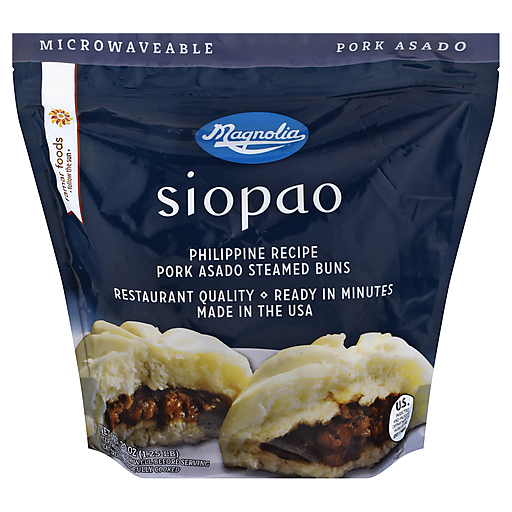BESTASTE SIOPAO PORK ASADO

Philippine recipe pork asado steamed buns. Restaurant quality. Ready in minutes the. Ramar foods. Follow the sun. Microwaveable. Philippines is distinguished as Asia’s melting pot due to the uniqueness and variety of food. Its culinary influences derive ham the ninny cultures that has dipped their hands in the country One particular culture that has embedded its roots since the late 1500's is the Chinese. The First Chinese came to the Philippines as merchants and eventually stayed to become permanent citizens. Many merchants immersed themselves into the Filipino culture by marrying Filipino wives. These wives learned their husbands Favorite traditional Chinese dishes and put their own spin by incorporating Filipino flavors. Subsequently many of the dishes known as Filipino cuisine hose history that can be traced back to China. Pin excellent example of the Chinoy, or Chinese Pinoy/Filipino, fusion is Magnolia® Siopao. Siopao or baozi in Chinese means steamed bun and originated in North China. According to legend Siopao was created when a Chinese General was told in order for his army to cross the river human heads must be sacrificed to be granted Permission. Not wanting to kill innocent people the General instructed his men to acquire beef and sheep meat and stuff them into dough creating large buns resembling human heads. Once upon throwing these into the river the army was safety granted Permission to cross the river. Steamed buns are now part of the Chinese ceremonial offerings In the Philippines you may find Siopao in many restaurants and street-food -vendors, It is a tasty meal for people on-the-go and those who simply enjoy a filling snack. So when you are craving for that authentic Chinoy flavor that is part of the Philippines' history grab a bag Magnolia Siopao. U.S. inspected and passes by Department of Agriculture. ramarfoods.com Made in the USA

